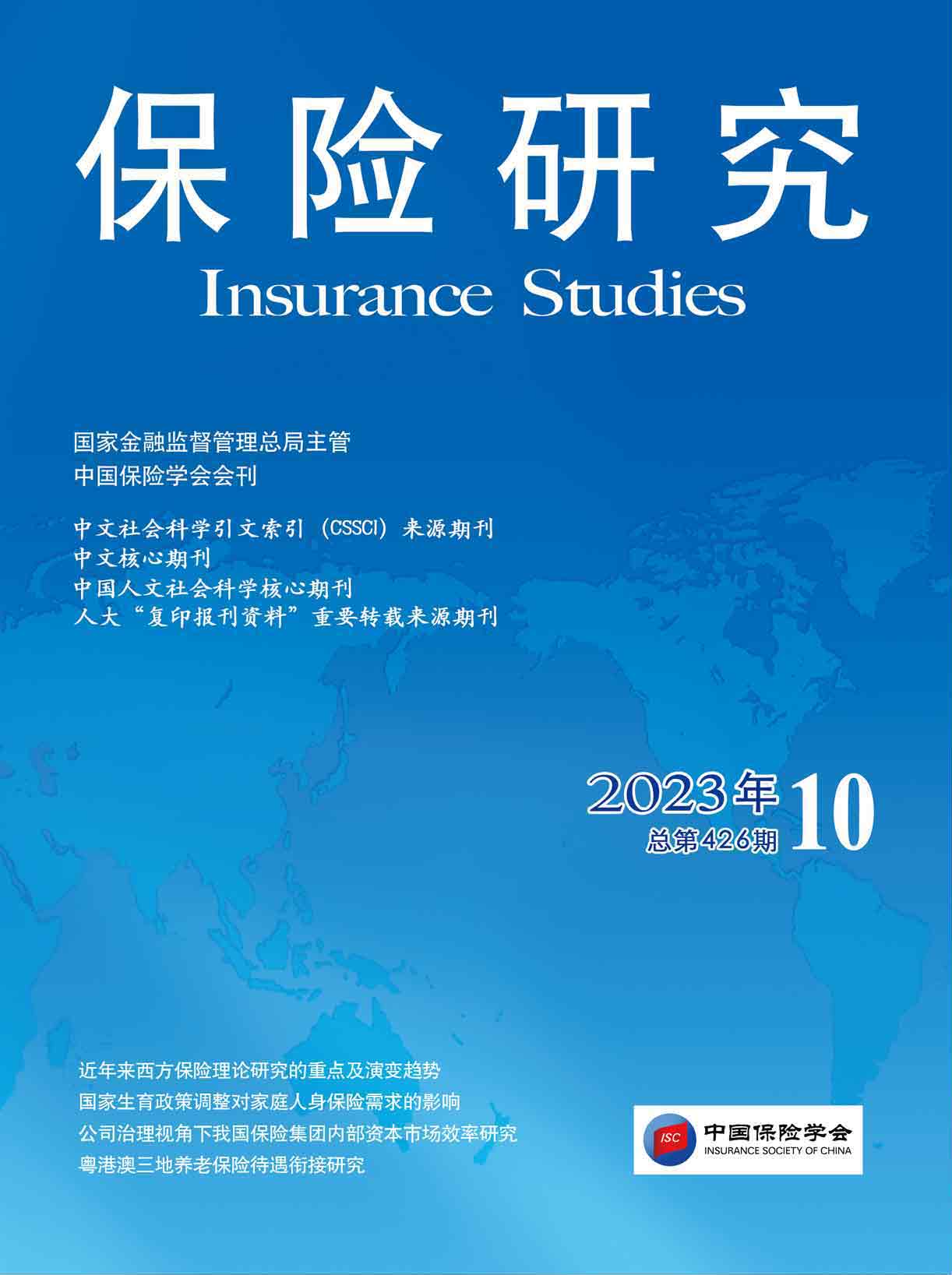
《保险研究》20231006-《医保待遇变化、自付医疗费用与疾病经济负担——基于健康扶贫政策冲击的分析》(吕国营、张需)
[中图分类号]F842.6;R197.1 [文献标识码]A [文章编号]1004-3306(2023)10-0082-17 DOI:10.13497/j.cnki.is.2023.10.006
资源价格:30积分
- 内容介绍
[摘 要]医保待遇提高有利于分担患者疾病经济负担,但患者医疗服务利用的变化也可能抵消这一效应,使得参保者总自付医疗费用无显著降低。本文使用中国健康与养老追踪调查(CHARLS)项目2011年和2018年数据,以健康扶贫政策的实施为外生冲击,利用双重差分模型(DID)研究医保待遇变化对患者疾病经济负担的影响,以及自付医疗费用能否代表患者疾病经济负担。实证研究发现:健康扶贫对贫困户群体总自付医疗费用没有显著影响,住院自付费用的增加抵消了贫困户群体门诊自付费用的下降;健康扶贫降低了贫困户群体自付比例,影响了他们的就医行为,导致总医疗费用增加;第三,仅使用自付医疗费用指标不能反映疾病经济负担。健康扶贫对自付医疗费用无显著影响,不代表健康扶贫没有发挥作用。健康扶贫对贫困户群体就医行为的影响,本身就是疾病经济负担降低的反映,是政策的应有之义。健康扶贫在增加贫困户群体医疗服务利用的同时,对总自付医疗费用占家庭收入的比重无显著影响,这是贫困户根据自身预算约束做出的理性选择,符合健康扶贫的政策目标。因此,在医保政策评估中,要统筹考虑自付医疗费用和总医疗费用的变化,避免低估医保的政策效果,同时,应通过多层次医疗保障体系,满足贫困户及贫困边缘群体医疗保障需求。
[关键词]医保待遇变化;医疗服务利用变化;疾病经济负担;政策目标
[基金项目]国家社科基金一般项目“基本医疗保险对老年人临终医疗费用的影响效应与机制研究”(21BGL192)。
[作者简介]吕国营,中南财经政法大学公共管理学院教授、博士生导师,研究方向:博弈论与信息经济学、医疗保险;张需,中南财经政法大学公共管理学院博士研究生,研究方向:医疗保险、健康经济学。
Changes in Medical Insurance Treatment,Out-of-pocket Medical Expenses and Financial Burden of Illness—An Analysis Based on the Impacts of Health-related Poverty Alleviation Policy
LV Guo-ying,ZHANG Xu
Abstract:The effect of increased health insurance benefits on patients′ financial burden of illness may be offset by changes in patients′ health care utilization,resulting in no significant reduction in total out-of-pocket health care costs for enrollees.To investigate the effect of changes in health insurance benefits on patients′ financial burden of illness and whether out-of-pocket medical costs alone can represent patients′ financial burden of illness,this study uses the implementation of the health-related poverty alleviation policy as an exogenous shock and uses the China Health and Retirement Longitudinal Study(CHARLS)project′s 2011 and 2018 data to conduct an empirical study with a difference in difference model(DID).The empirical findings are as follows.First,health-related poverty alleviation does not have a significant effect on total out-of-pocket medical costs for the poor household group,and the increase in inpatient out-of-pocket costs offset the decrease in outpatient out-of-pocket costs of the poor household group;second,health-related poverty alleviation reduces the out-of-pocket ratio of the poor household group,resulting in a change in their health care seeking behaviors,which in turn leads to an increase in total medical costs;third,using only the indicator of out-of-pocket medical costs does not reflect the economic burden due to illness.Just because health-related poverty alleviation does not have a significant impact on out-of-pocket medical expenses does not mean that the policy does not work.Its impact on the medical treatment behaviors of poor household groups is itself a reflection of the reduced economic burden of disease,which is the proper intent of the policy.While increasing the utilization of medical services by poor household groups,health-related poverty alleviation has no significant impact on the proportion of total out-of-pocket medical expenses to household income,which is a rational choice made by poor households according to their own budget constraints and is in line with the policy objective.Therefore,the changes in out-of-pocket medical costs and total medical costs should be considered in an integrated manner in the evaluation of social health insurance policies to avoid underestimating the policy effects,and at the same time,the needs of poor households and poor marginalized groups for medical protection should be met through a multi-level medical protection system.
Key words:changes in medical insurance benefits;changes in medical service utilization;economic burden of disease;policy objectives
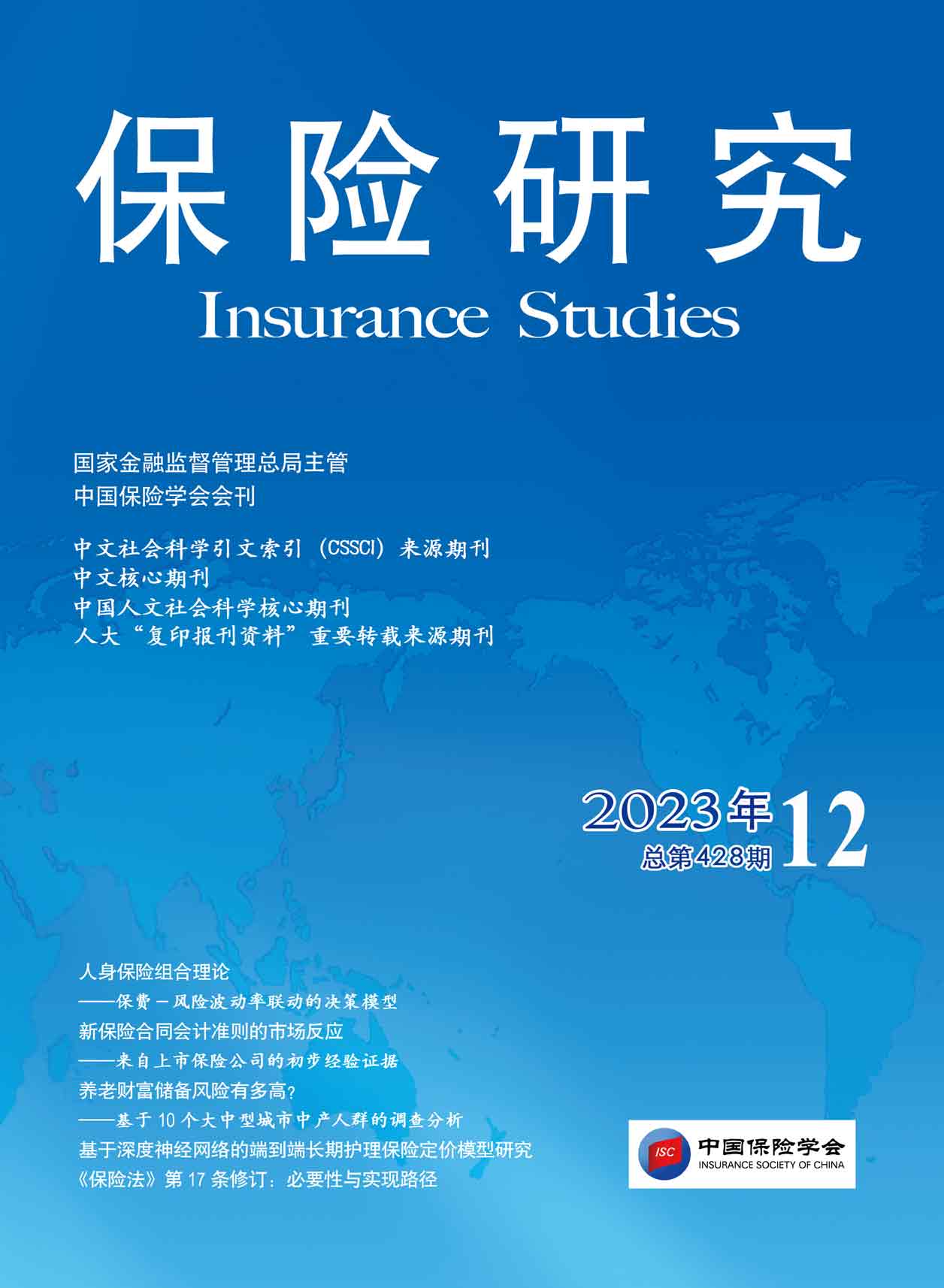
《保险研究》20231201-《人身保险组合理论——保费-风险波动率联动的决策模型》(张程、范雨文、曹铸、王洪彬)
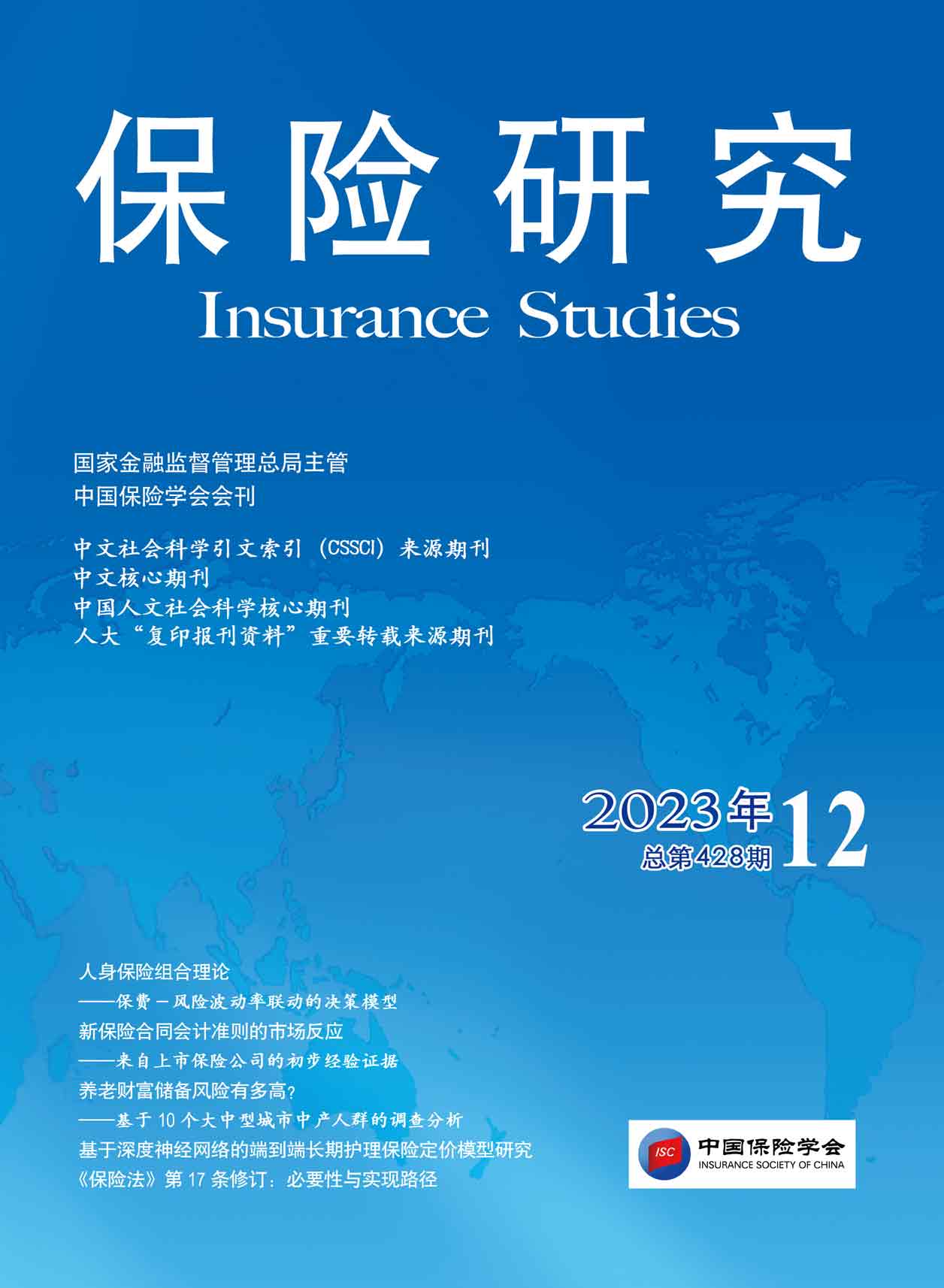
《保险研究》20231202-《新保险合同会计准则的市场反应——来自上市保险公司的初步经验证据》(彭雪梅、段伊雪、王佳)
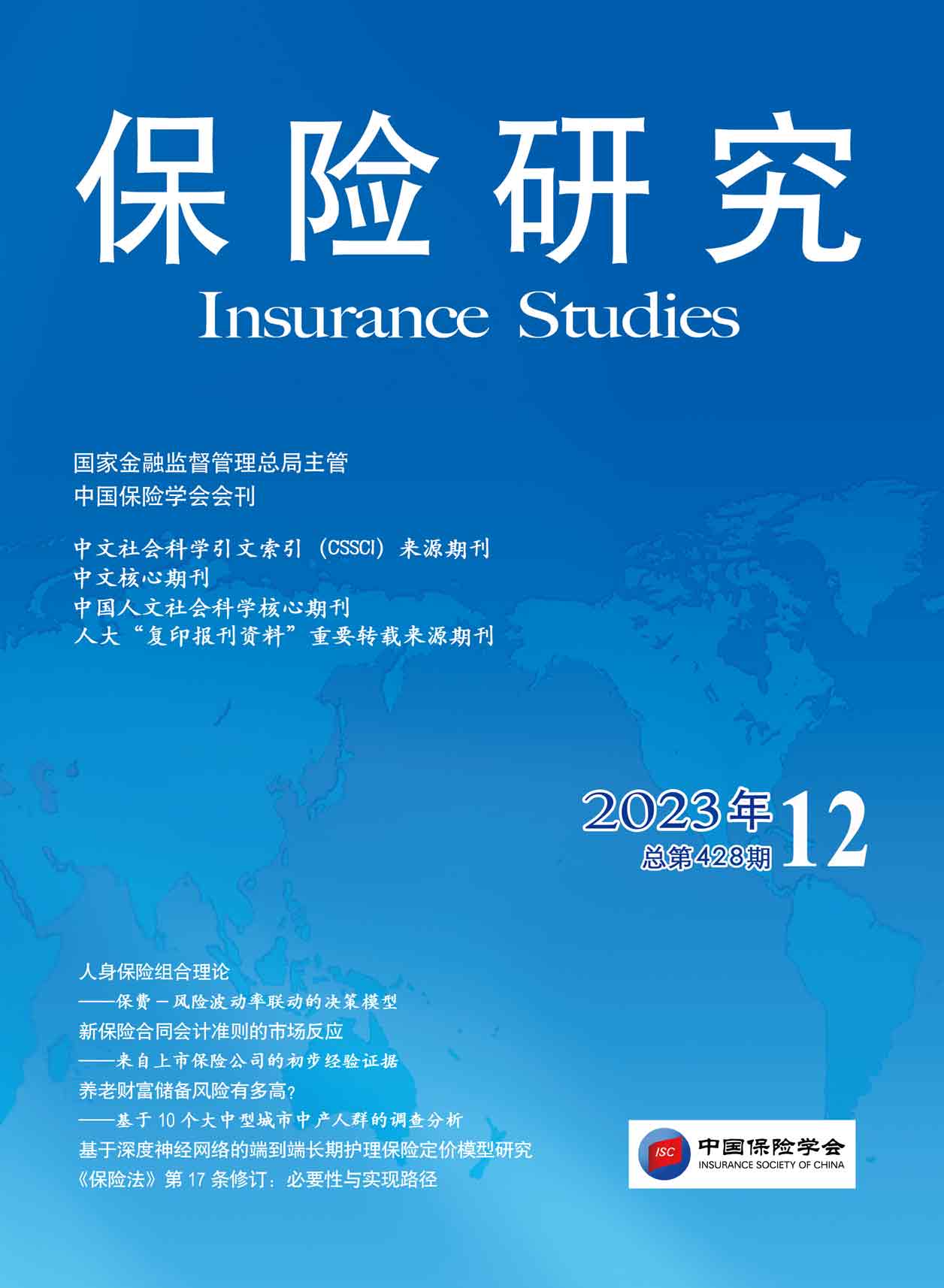
《保险研究》20231203-《套期保值效果与“保险+期货”赔付合理性——基于玉米和大豆试点项目的实证分析》(鞠荣华、顾巧静)
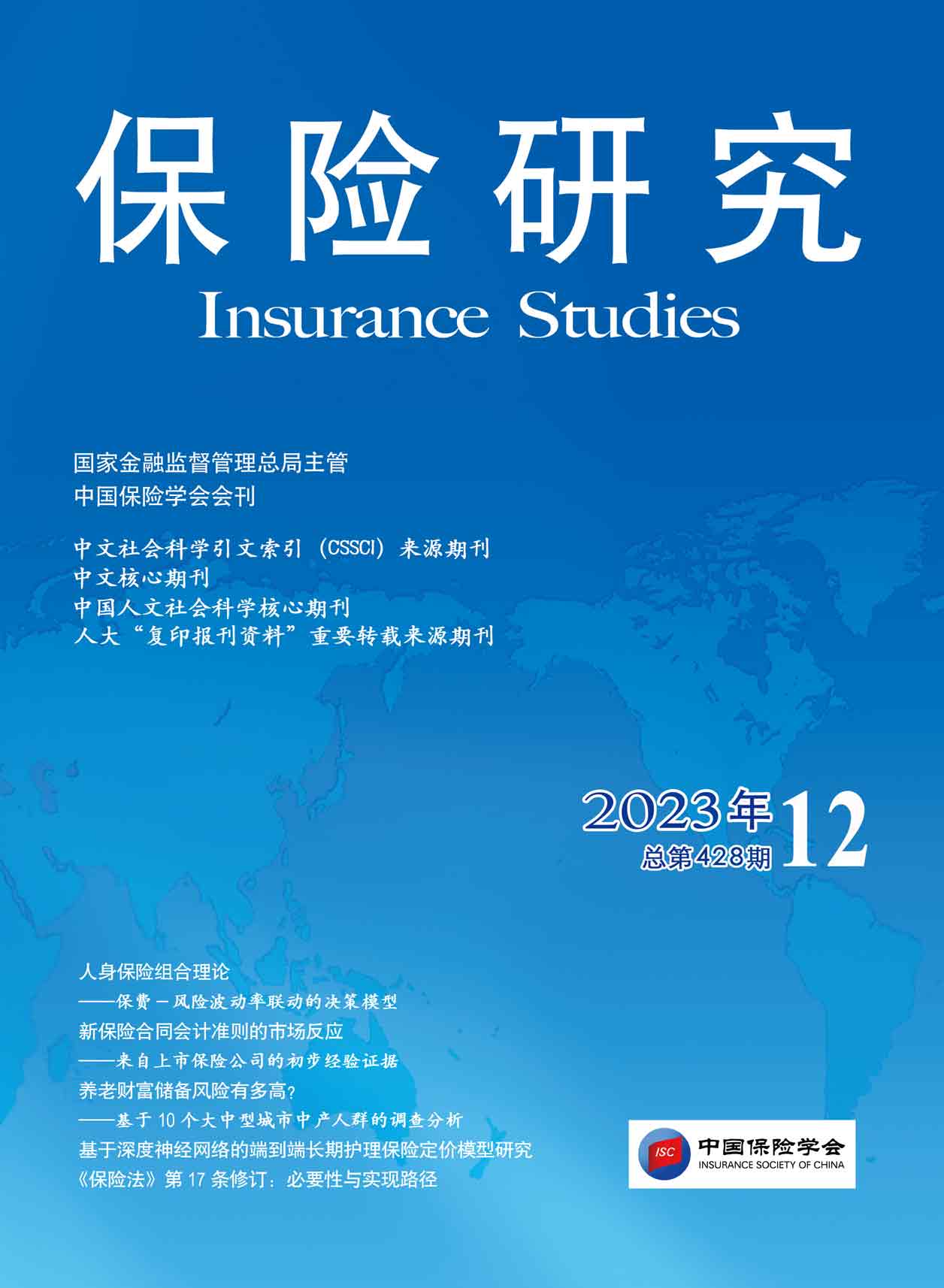
《保险研究》20231204-《养老财富储备风险有多高?——基于10个大中型城市中产人群的调查分析》(冯扬、房连泉)

《保险研究》20231205-《社保基金持股对企业ESG改善的实证分析》(杜秋萱、姜岩、侯德帅)
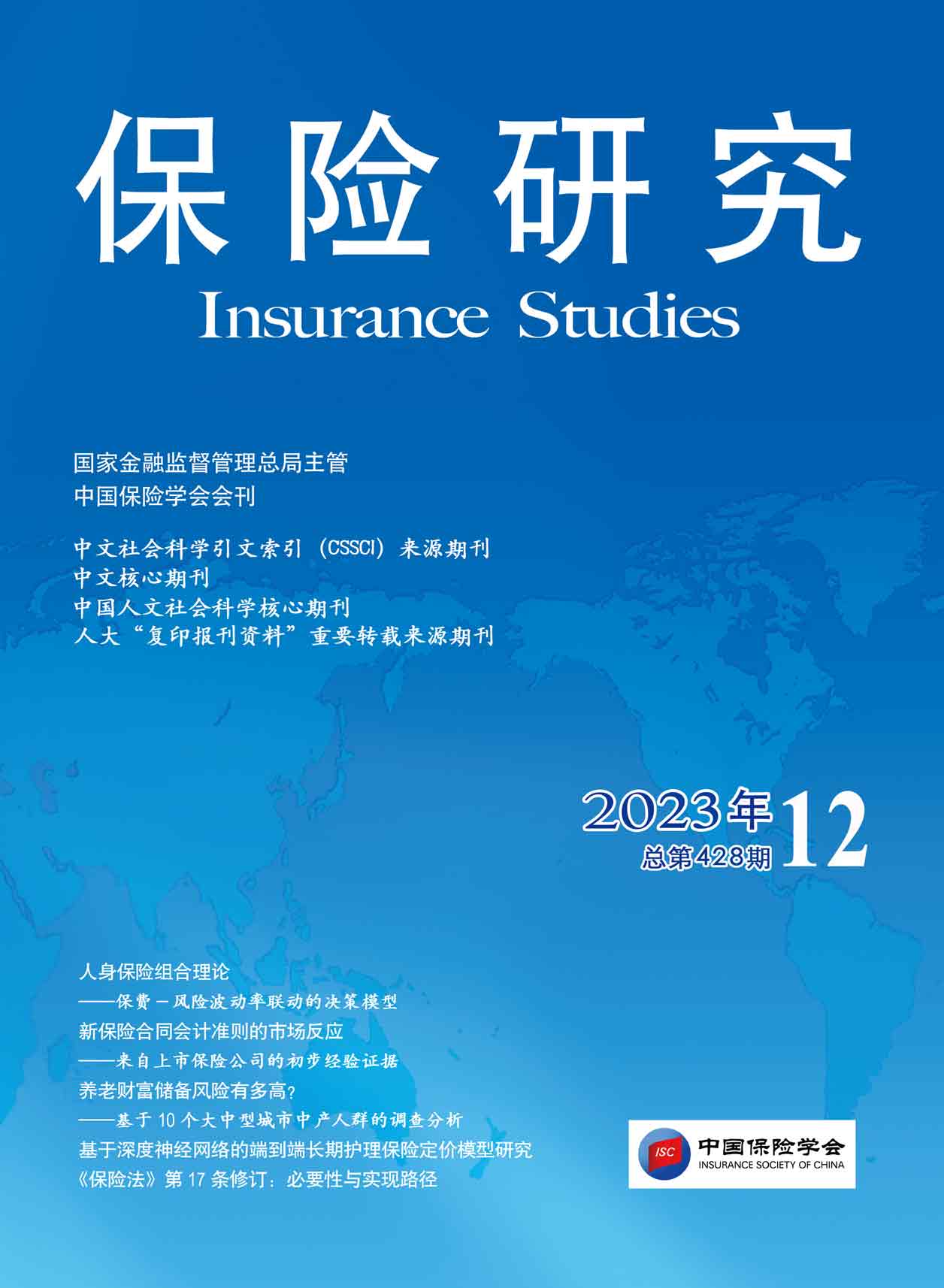
《保险研究》20231206-《基于深度神经网络的端到端长期护理保险定价模型研究》(仇春涓、刘守贤、 张楠)
